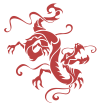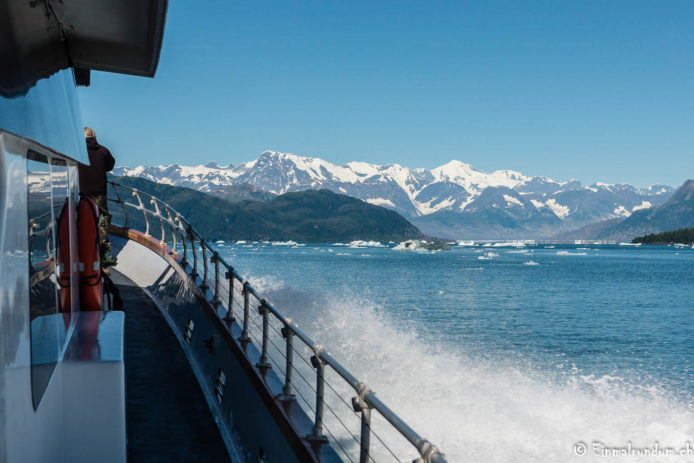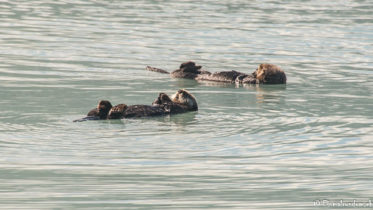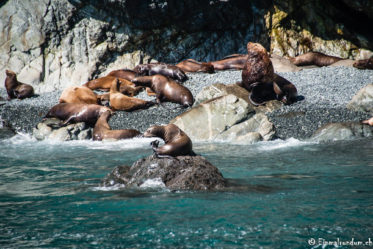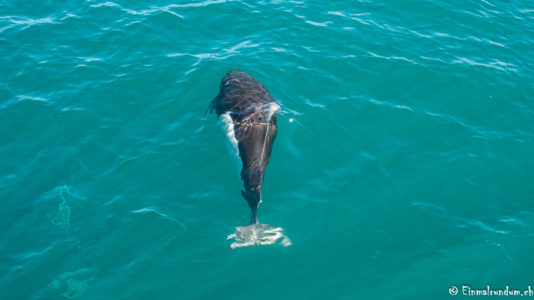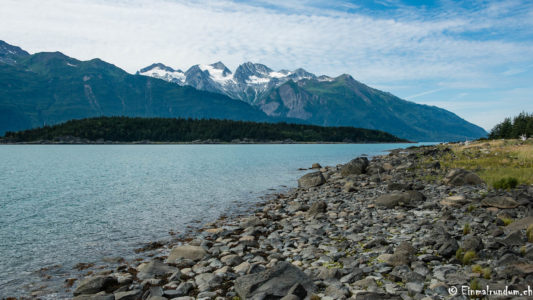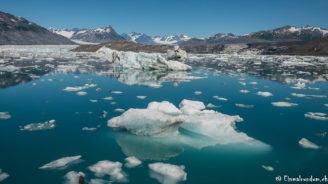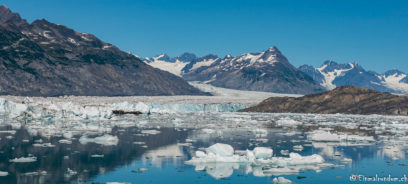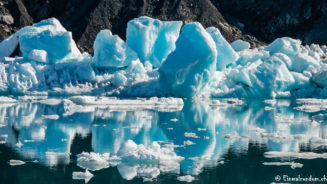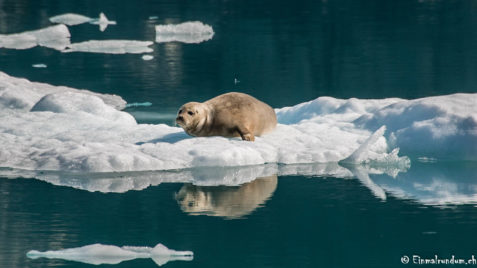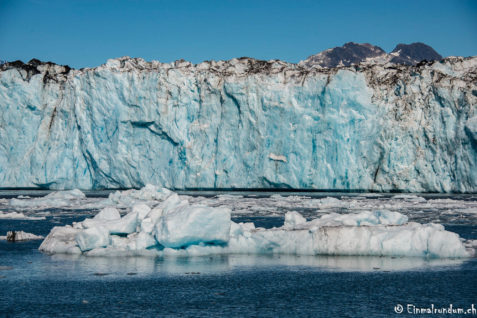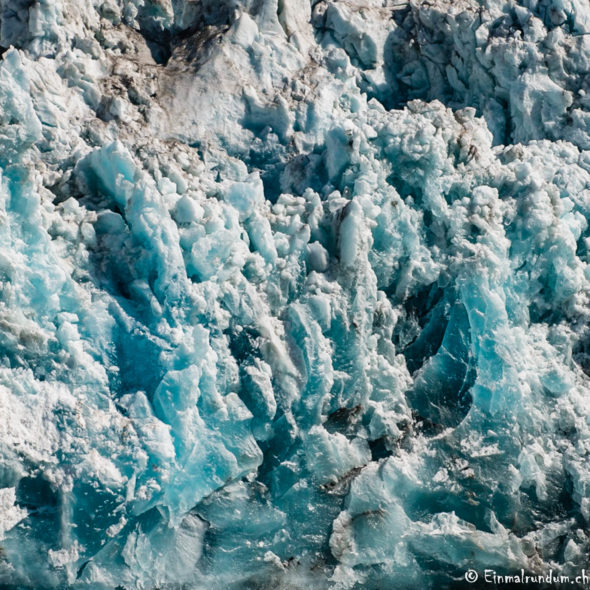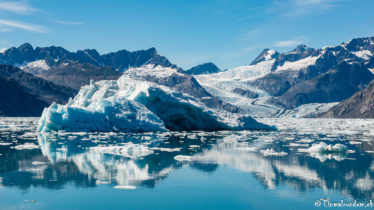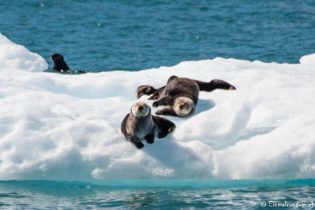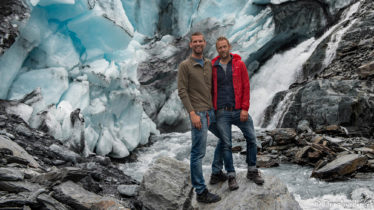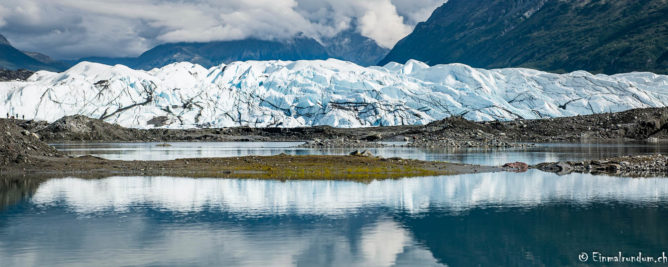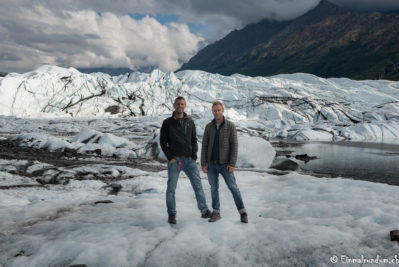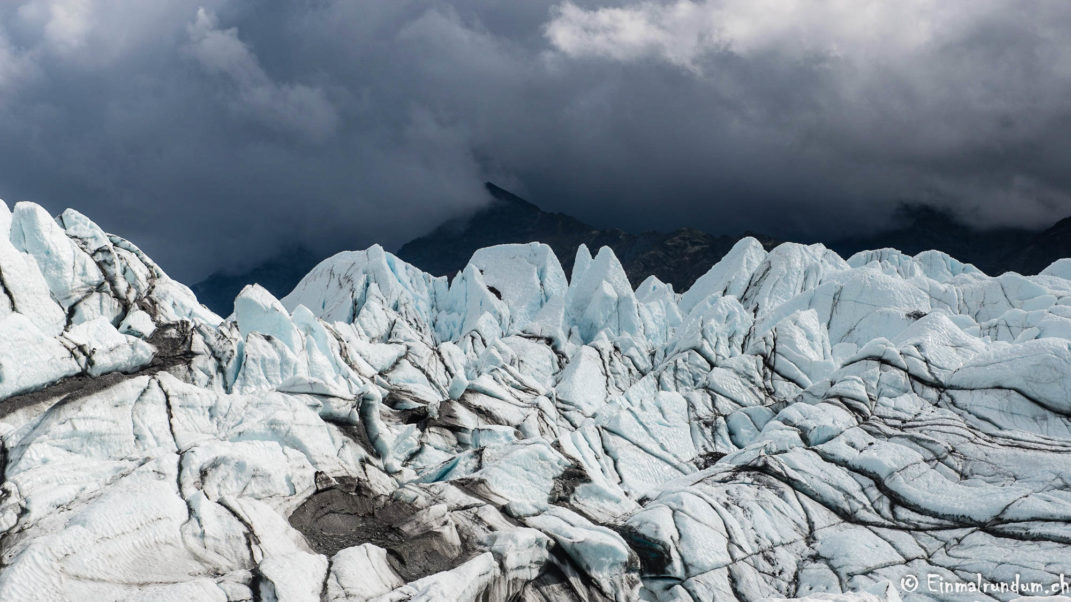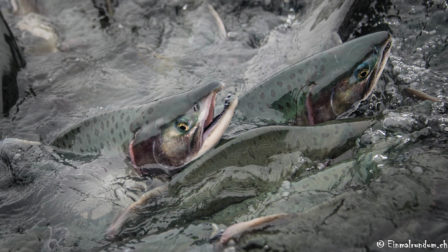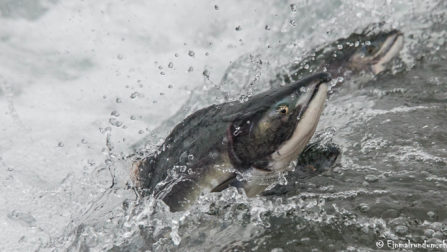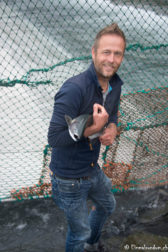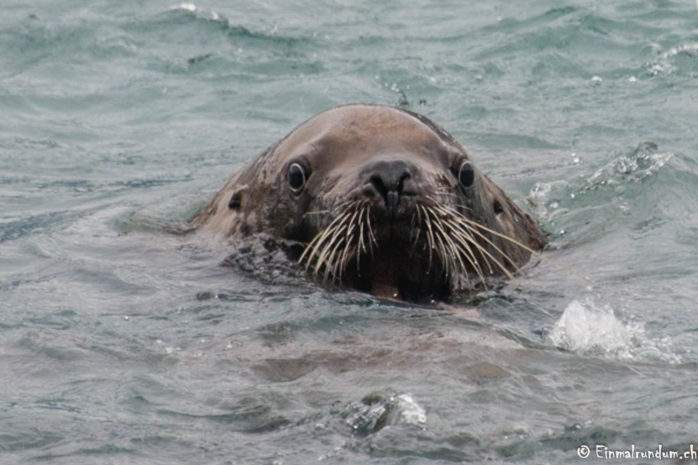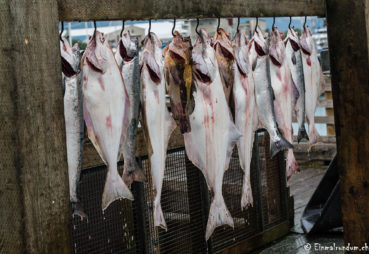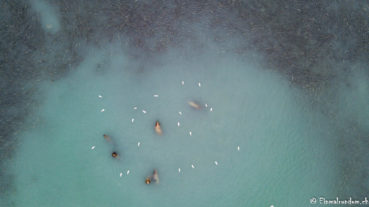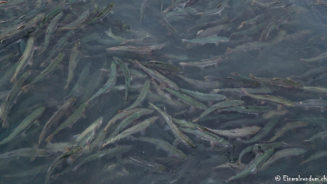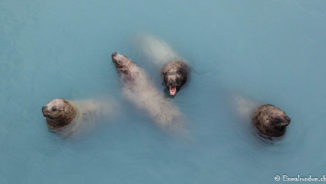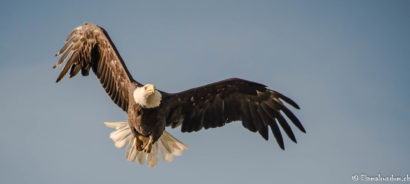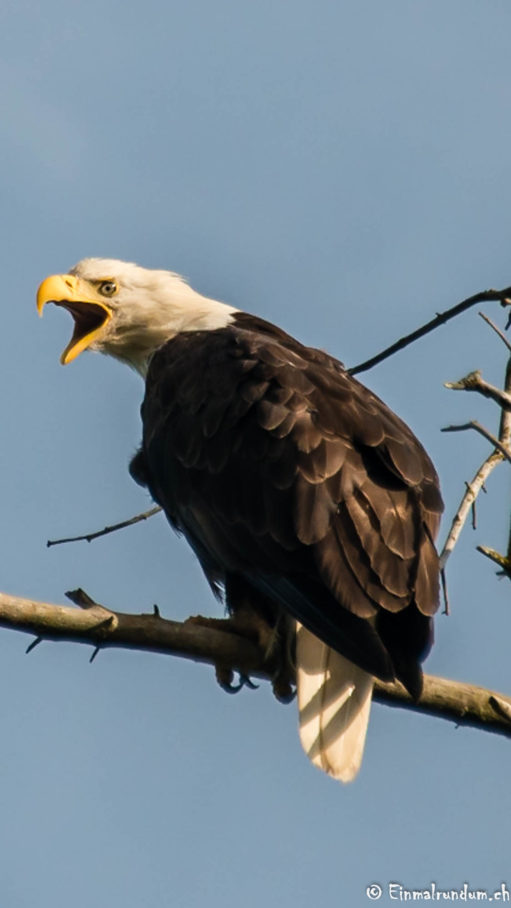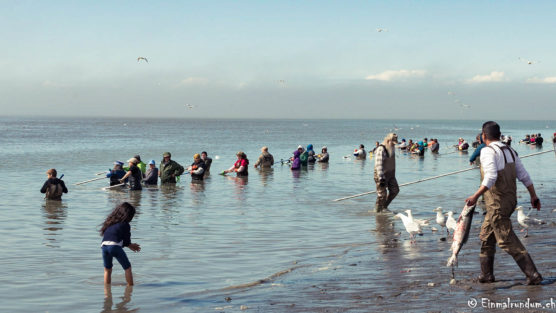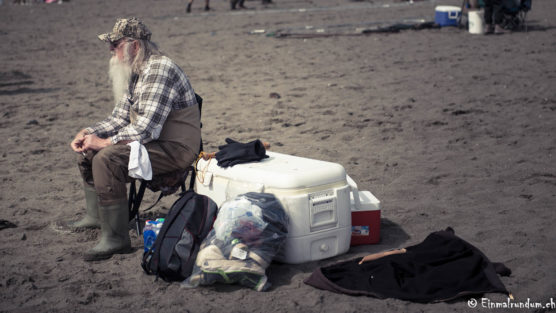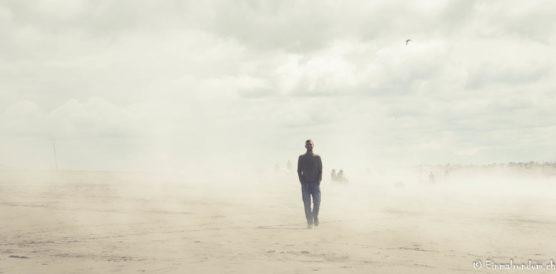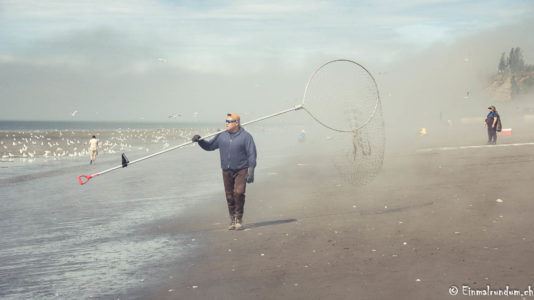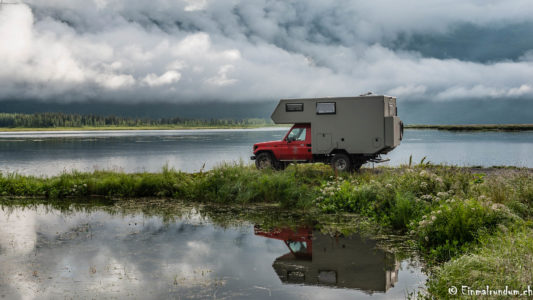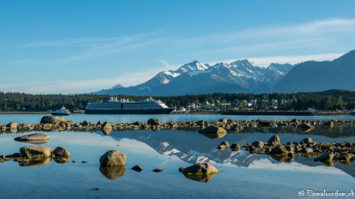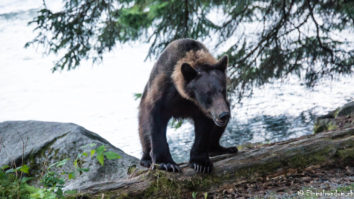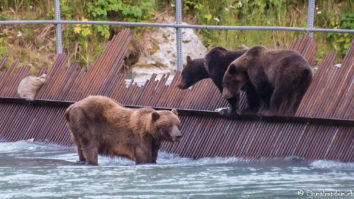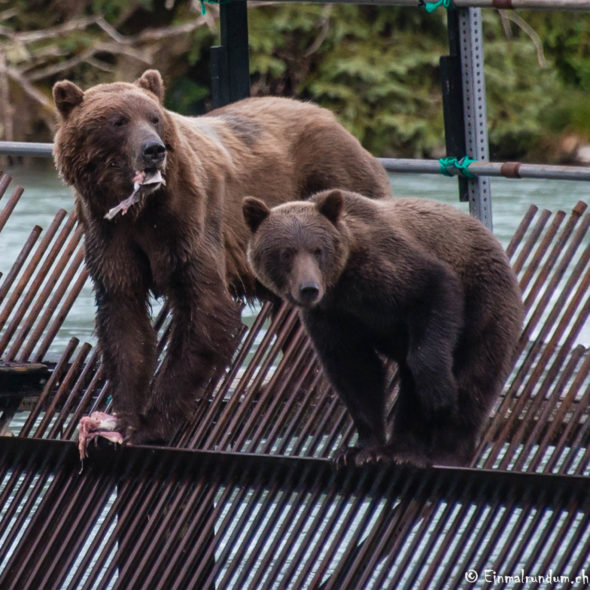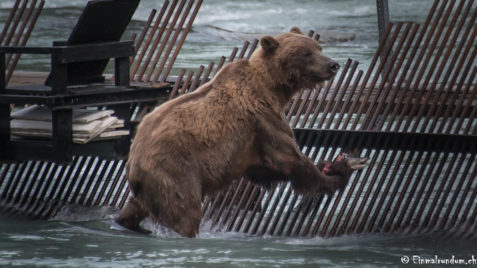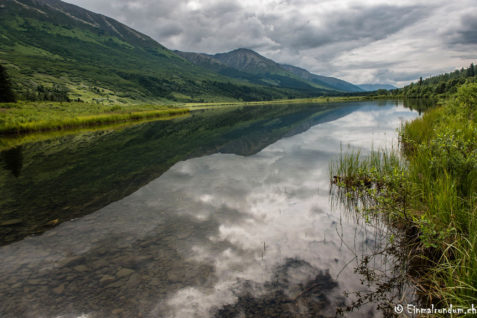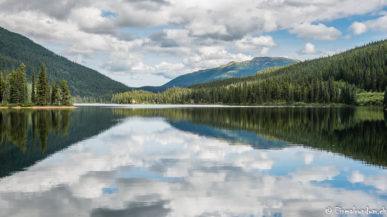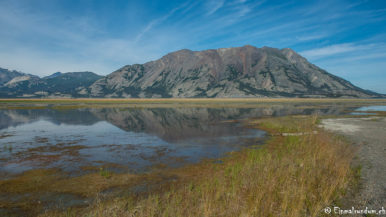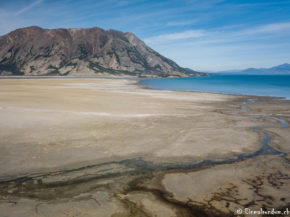ICE, SALMONS AND BEARS
We are in Valdez and are about to board Lu-Lu Belle at 11 a.m., so not too early in the morning and we realize immediately that we won’t be the only overlanders who are going to spend a car-free day on the water. Merely minutes later we are already exchanging stories, tips and routes with our fellow travelers while setting sail. On the way to the famous Columbia glacier we are accompanied by harbor porpoises, sea lions and the voice of our extremely motivated and already retired captain. The cute sea otters with their thick and warm fur swim like a piece of cork in the in the icy water. The closer we then get to the glacier, the colder the airstream becomes.
TITANIC IN SMALL..
Suddenly, icebergs ramble our boat and the talkative captain goes quiet, throttles the speed and concentrates on the water in front of the bow. The sea is mirror-like and we dive into a glittering glacier world that even as a Swiss we have never seen before. As we reach the end of the bay, we are facing a 20-meter high wall made of ice. The cracking of the ice creates a sinister atmosphere and goes right through us. And then a chunk of ice crashes into the depths and causes a wave that spreads throughout the bay. Unfortunately, the glacial melting has accelerated enormously here too. Whenever we visit glaciers in Alaska, we see in alarming scale how many meters or even kilometers the ice masses have retreated in recent years.
FISHING
On our way back, dolphins escort the boat again and sea lions are swimming in the water. Latter feed on the huge, seasonal shoal of salmon in these waters. In Valdez, we observe them right from one of our overnight spot. Millions of salmon gather along the coast to finally swim into the river and to spawn. Just in front of our camper van several fat sea lions sit in the water. Lazy and already completely overeaten they only snatch now and then a salmon and chew halfheartedly on it. We almost have the feeling that they are tired of this salmon delicacy and would like to have another fish on the menu instead. The shoal of salmon here is so dense, that Stefan simply pulls a salmon on its tail out of the water. ? However, we feel sorry for the poor fish and release him into freedom instead of putting it in our pan. The fishes which the Alaskanians on the Kenai peninsula catch with their nets and rods though are less fortunate. They end up in cooling boxes and then in the freezer to secure the fish supply in the endlessly long winters.
HOW LET THE BEARS OUT ?
Not only humans eat salmon, but also the bears. After an awesome and very scenic drive through the mountains down to the coast we can witness this in a fishing town called Haines. In the evening, a grizzly mum with her two half-grown cubs emerges from the forest and walks down to the river. What an experience to see those three bears grabbing not only one but many of these salmon sushi snacks out of the stream.
With this visit to Haines, our Alaska adventure comes after nearly four weeks to an end. We take a ferry to Skagway and leave the most northern state of the U.S. towards Canada by crossing the famous White pass, which also had to be conquered a bit more than 100 years ago by the adventurous gold seekers on their way to Dawson City in the Yukon.
